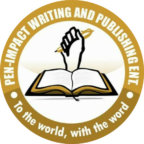Newsletters are channels through which nonprofits update and inform their target audience about their programs and projects. Achieving the purpose of writing a newsletter requires specific skills and knowledge.
In this blog, we discuss the procedures to follow when writing newsletters for nonprofits.
- Captivating Header:
The newsletter header is the first thing readers see. Try to keep it short and exciting for the targeted audience. The use of keywords that your subscribers are likely to be interested in is encouraged. To ensure that you get what you desire, research your subscribers and the peculiar words likely to get their attention.
- Purpose and Audience:
The motivating factor for each newsletter written is always the central message of the nonprofit organisation. It is essential also to have good knowledge of the individual recipients to enable you to craft what will appeal to them.
Always understand that words used for donors and supporters will differ from words used for benefactors.
- Write Clearly and Make Your Content Concise:
Your newsletter should be easy to read. The use of short paragraphs, headings, subheadings, and bullet points to break up your text is advisable. The use of jargon and unnecessary words when writing a newsletter must be avoided.
- Use Imagery:
The use of visuals can make your newsletter more engaging and visually appealing. Including images, videos, and GIFs to illustrate your points and make your content more memorable is highly advised.
- Include a call to action:
Part of the reason for sending out newsletters most of the time is to get a response from subscribers. At the end of your newsletter, tell your subscribers what you want them to do. If what you want is for them to visit your website, donate to your organization, or sign up for an event? Make sure your call to action is clear and easy to follow.
Conclusion
Newsletters generally inform readers and get them to act after reading. Having that in mind makes it easy for you when writing them.
In general, newsletters should be less verbose, concise and engaging to read.

